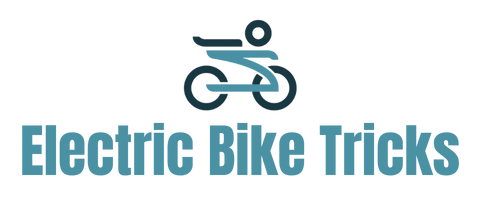
How Do I Test My Electric Bike Charger? You may have asked yourself this question when you noticed that the charging time of your electric bike battery has become longer than usual, or that the charging lamp no longer lights green as usual.
Despite the ease of testing the charger, there are many people who do not know much about electric bike chargers in general, so in this post, we will explain how to test the charger and also some questions through which you can learn some useful information about electric bike chargers.
How Do I Test My Electric Bike Charger?
As a general rule, the electric bike charger can be tested using the multimeter by following these steps: Connecting the charger to an electrical source, then placing the negative probe on the negative side in the charger jack, then placing the positive probe on the positive side in the charger jack.
The reading of the multimeter in the case of the 36-volt battery charger is about 42 volts. In the case of the battery 48 volts 54.6 volts.
Now that we know how to test the electric bike battery charger, let’s answer some useful questions about the electric bike charger.
Will I get a charger with my new electric bike?
This question may seem obvious, but it is asked a lot, especially with the general trend of some international companies considering the charger as a separate part from the battery, which we must buy!? Have you heard of Apple?!
That’s why we should point out to all the beginners in the world of electric bikes that you will get a battery charger when you buy your new electric bike (we hope that Apple’s policy does not spread in the world of electric bikes)
Are all ebike chargers international?
No, not all chargers with electric bicycle batteries are universal. Chargers come in different capacities depending on the type of your battery.
Generally, there are two types of voltage written on the charger. The first type is the battery volt if your battery is 36 volts, it will write on the charger 36 volts.
As for the second type of voltage that is written on the charger, it is the maximum voltage that this charger will output.
For example, if your bike battery is 36 volts, the writing will be 42 volts.
Is the charging speed differ from one charger to another?
Yes, the charging speed varies from one charger to another, depending on the amp of the charger and the battery together.
For example, if you have a 48V 10A battery and its charger is 2A, this means that you will wait about 5 hours to charge this battery (10/2 = 5).
If you have a 3-ampere charger for the same battery, you will need about 3.3 hours to fully charge the battery (10/3=3.33)
Is the Charger PLug make a difference?
Can ebike battery chargers switch between 110 & 220?
What happened if I left the charger plugged into the electrical outlet?
Tips for faster ebike battery charging.
1-Charge your ebike battery at moderate temperature.
2-Don’t wait till your battery is fully charged.
You may have noticed that the last 20% before the battery is fully charged takes a long time because the battery does an internal rebalance (in a simplified way), so if you want to reduce the charging time, you should not wait until the battery reaches full charge.
But it should be mentioned here that you should leave the battery on the charger until it reaches 100% at least once a month
Check out our recommended Fast charger on Amazon From Here
3- Get a higher amp charger.
How to choose a faster charger for your ebike battery?
In order to choose a faster charger for your electric bike battery, there are two very important factors, first the amp that you will choose and also the voltage.
The charger ampere.
As a general rule, it is not recommended to buy a charger whose amperage is higher than half an ampere of the battery.
For example, if you have a 48-volt 10-ampere battery, the maximum charger ampere should not exceed 5 amperes, because exceeding this limit will damage your battery in the long run.
Check out our recommended Fast charger on Amazon From Here
The charger voltage.
When testing the charger voltage, it must be equal to the battery voltage, but As we mentioned earlier, there are charger manufacturers who write on the charger the maximum charge, and here it is confusing because when your bike battery is 48 volts, you will see that it says 52.6 volts on the charger.
That is why we will share with you a very simple equation so that you know how to calculate the maximum.
And the equation is as follows
Number of battery cells * 4.2v = Maximum charge
Example charger suitable for a 48-volt battery.
13 Number of cells * 4.2 volts (maximum capacity of a single cell in a lithium battery) = 56.4V.
Conclusion.
The electric bike battery charger is tested using a multimeter to measure the output voltage of the charger.
